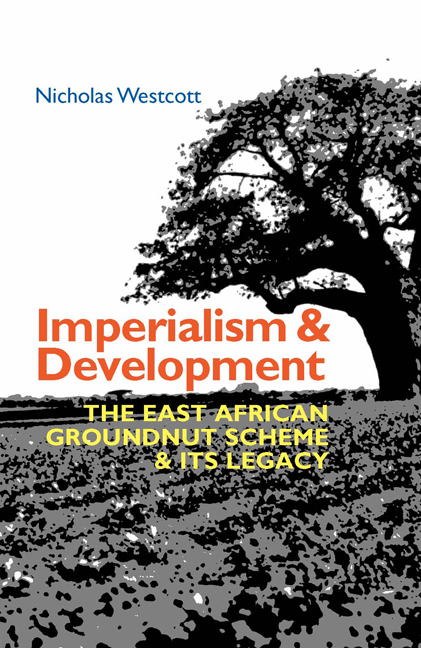Book contents
- Frontmatter
- Dedication
- Contents
- List of Illustrations
- List of Abbreviations
- Miscellaneous Frontmatter
- Preface and Acknowledgements
- Map
- Introduction
- 1 Austerity
- 2 A Scheme is Born
- 3 ‘The Poison of the Official Pen…’
- 4 The Groundnut Army
- 5 Beating about the Bush
- 6 The Overseas Food Corporation
- 7 1949: The Crisis
- 8 The Last Chance
- 9 A Sudden Death
- 10 Legacy and Lessons
- Bibliography
- Index
- Eastern African Studies
4 - The Groundnut Army
Published online by Cambridge University Press: 26 May 2022
- Frontmatter
- Dedication
- Contents
- List of Illustrations
- List of Abbreviations
- Miscellaneous Frontmatter
- Preface and Acknowledgements
- Map
- Introduction
- 1 Austerity
- 2 A Scheme is Born
- 3 ‘The Poison of the Official Pen…’
- 4 The Groundnut Army
- 5 Beating about the Bush
- 6 The Overseas Food Corporation
- 7 1949: The Crisis
- 8 The Last Chance
- 9 A Sudden Death
- 10 Legacy and Lessons
- Bibliography
- Index
- Eastern African Studies
Summary
Soon after dawn on 10 February 1947 a small band of pioneers came over the range of mountains that lies between the Central Line station at Gulwe and the small mission station of Kongwa. They had their first sight of the vast, dry, bush-covered plain that had been selected as the first location for the new scheme. One of them, Hugh Bunting, later recalled: ‘We had been bitten almost to pieces by mosquitoes the night before at the railway rest-house; we were tired; we were pretty hungry, but the inspiration of that first moment I think has been unforgettable for all of us.’ They faced the same challenges as many pioneers, bringing a scheme seen at the time as at the cutting edge of modernisation into a place that was, to say the least, off the beaten track. This chapter looks at how they approached the questions of land, labour, transport and material in the effort to make the scheme work as conceived.
Kongwa
The advance party, ominously numbering 13 in all, had left a bleak, frozen, snow-covered London airport on 30 January. Their flight to Tanganyika was delayed two days when the wartime Lancastrian (a civilian version of the Lancaster bomber) they were flying in developed engine trouble in Khartoum. But their arrival in Dar es Salaam on 4 February caused a sensation: the town had never seen a plane as big as a Lancastrian before, and even the Chief Magistrate had to suspend hearings as everyone in the courthouse rushed out to watch it fly over. The team were put up in an old RAF transit camp and taken round to see the relevant government officials before boarding the train for the 24-hour journey to Gulwe.
From there they set off overland. They set up camp at a place called Sagara, 14 miles from Kongwa, in a pleasant glade up against the hills, with a spring of good but rather hard water. They were greeted by George Nestlé, a larger than life white hunter with a slouch hat and huge moustache, taken on by the UAC to look after the party as they settled in.
- Type
- Chapter
- Information
- Imperialism and DevelopmentThe East African Groundnut Scheme and its Legacy, pp. 78 - 98Publisher: Boydell & BrewerPrint publication year: 2020



